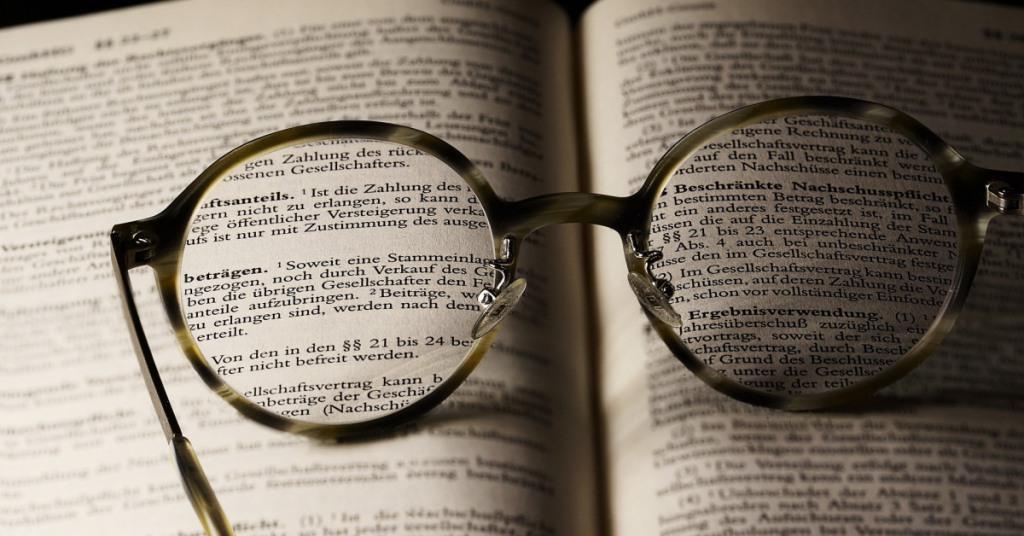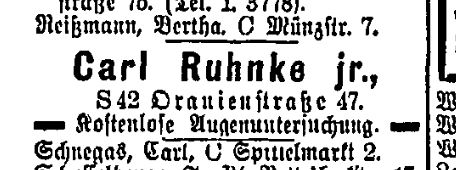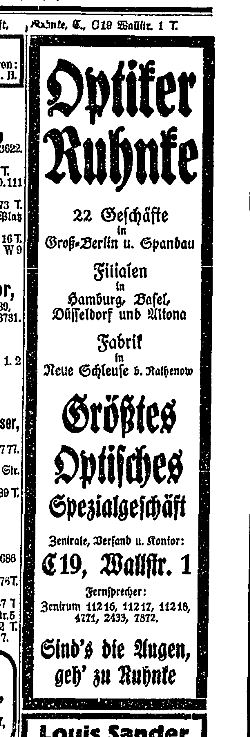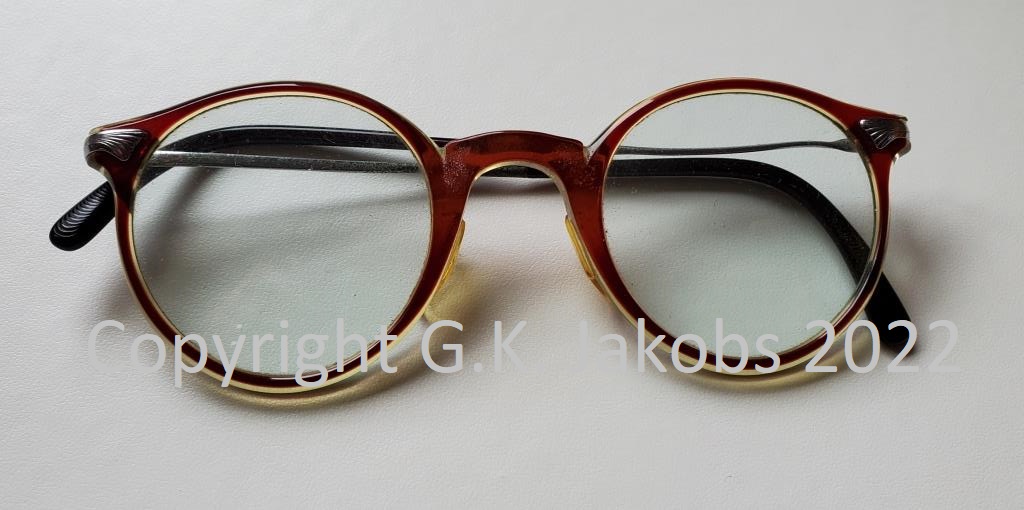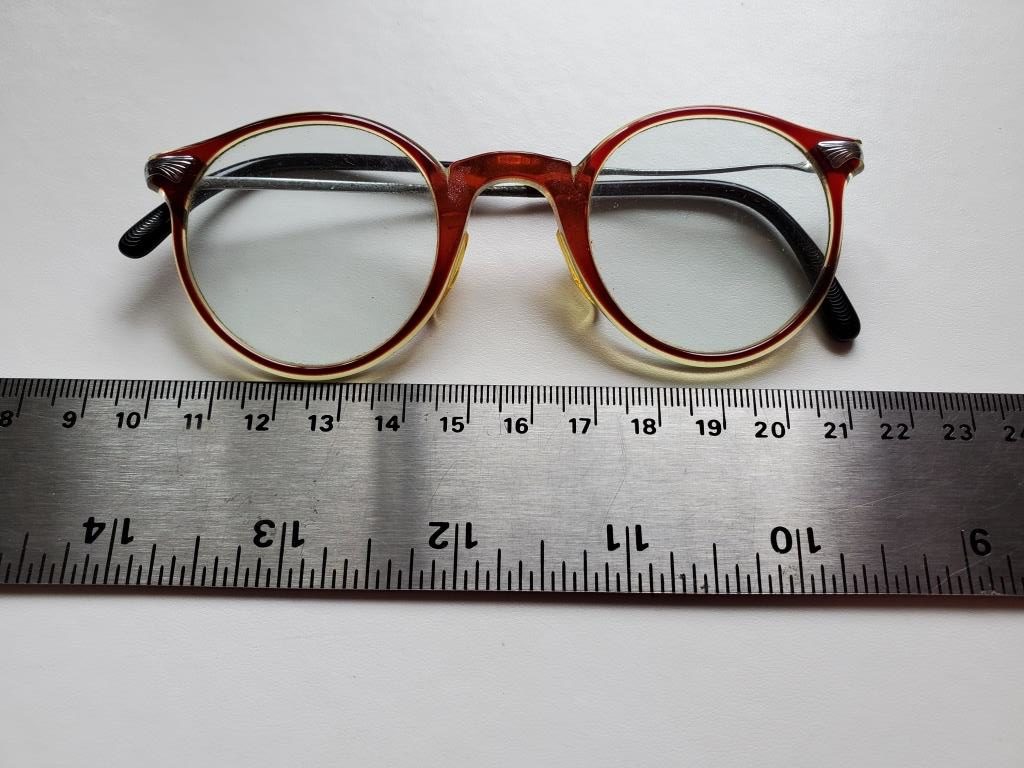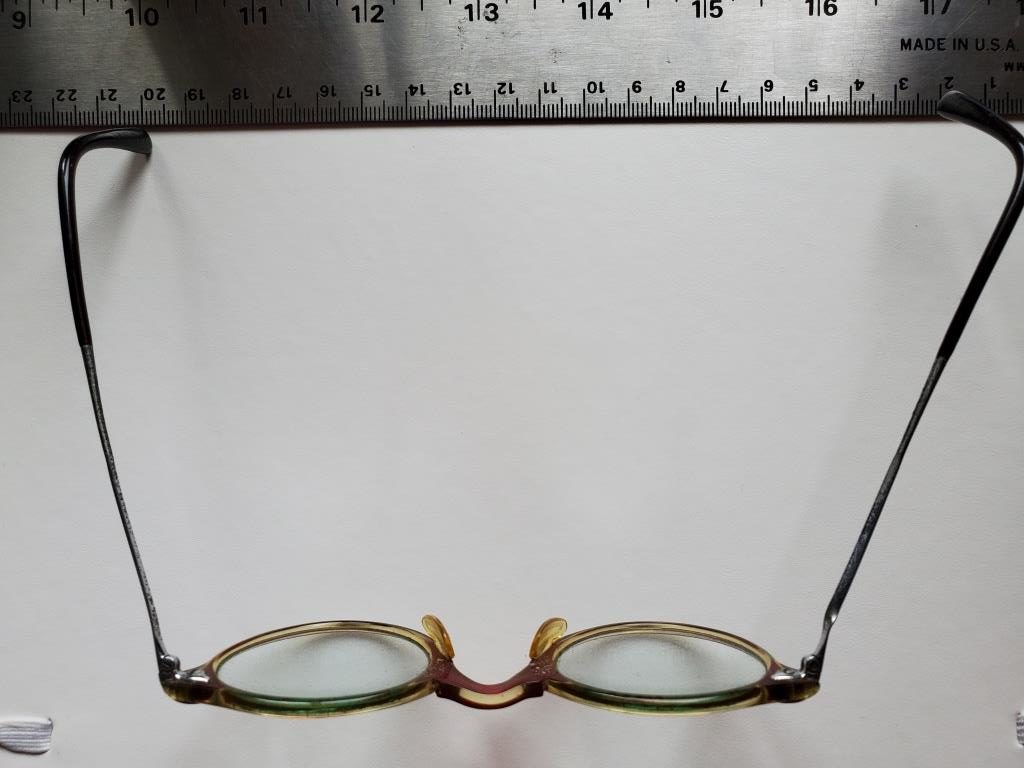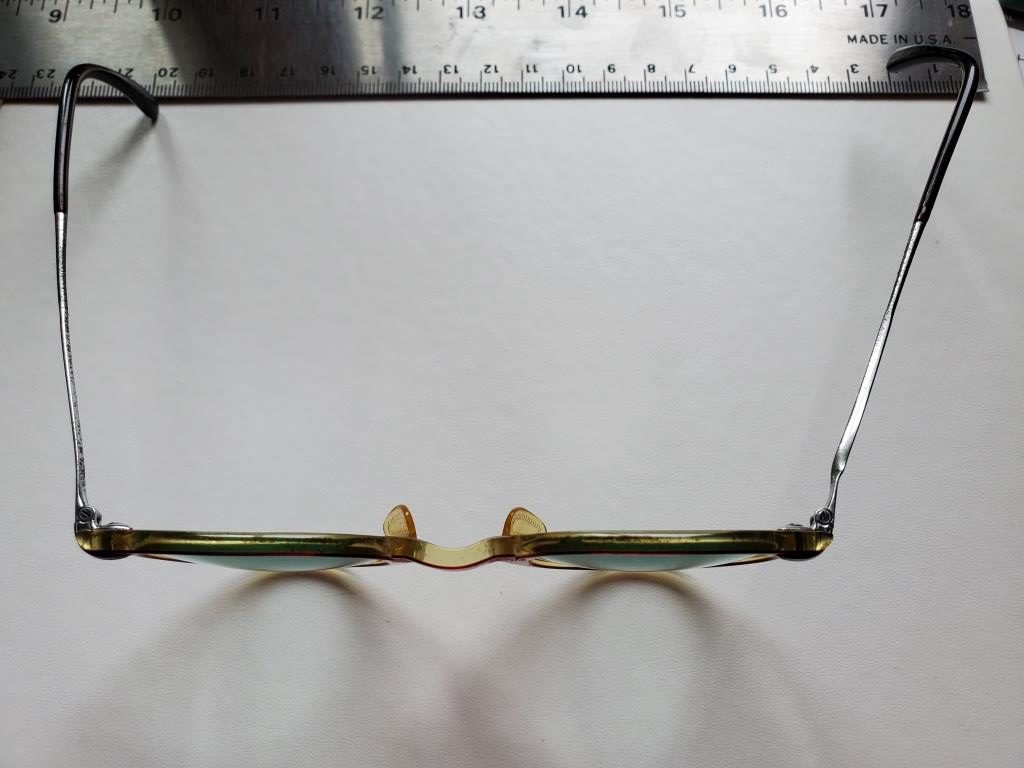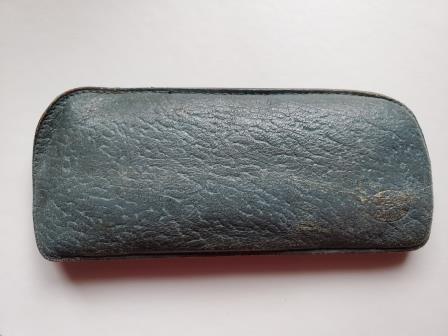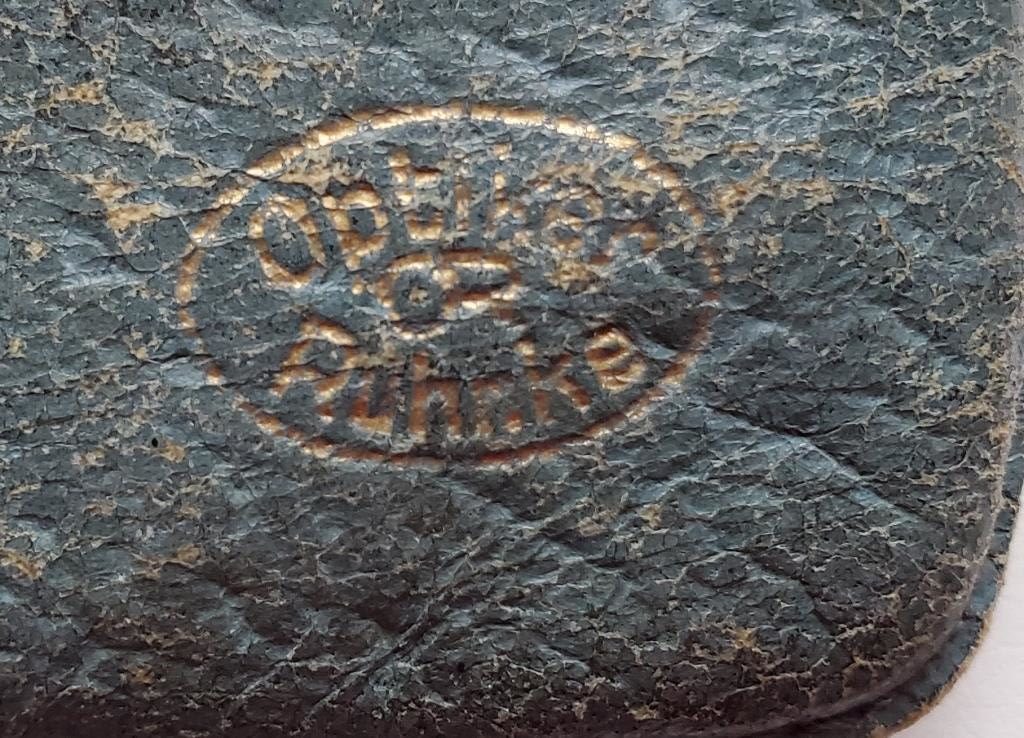Almost 80 years ago, a pair of reading glasses changed hands. German spy Josef Jakobs handed his spectacles to Lance Corporal William Chidlow, a Coldstream guardsman who was a Military Policeman with Britain’s Armed Forces. The transfer took place in the early hours of Friday, August 15, 1941, at Wandsworth Prison. Josef, found guilty of espionage, was due to be executed by firing squad at the Tower of London at 7 am. He knew that he would have no further use for his spectacles and wished Chidlow to have them. The two men, one a German prisoner, and the other an English guard, had spent three weeks together and, despite language difficulties, had managed to connect. They had shared stories of their families. Despite being on opposite sides of the war, the two men were both soldiers and this bonded them together.
The story of Josef’s spectacles is a fascinating one. Seventy years after the spectacles changed hands from Josef to Chidlow, they once again changed hands, from Chidlow’s daughter to Josef’s son. On his death bed, Chidlow had made his daughter promise that she would find Josef’s family and return the glasses to them. She fulfilled that promise and the spectacles had come full circle
Spectacles of a Spy
Prior to the spectacles coming back home, so to speak, I knew very little about them. According to the MI5 files, Josef was in possession of a pair of horn-rimmed spectacles slipped into a blue leather case marked Optiker Ruhnke. With the glasses now in my possession, I thought I’d do some digging into their background.
The leaping off point is the name Optiker Ruhnke, presumably the name of an optician. A Google search yielded a couple of 20 year-old clues. The following is from an article in the Hamburg Abendsblatt newspaper, published 23 October 2002. I have taken the liberty of running the German text through the Deepl translator tool.
Optiker Ruhnke is now called Synoptik
Hamburg. New name, new owner: The 52 branches of the Ruhnke optician chain throughout Germany, including the 15 stores in Hamburg, will bear the name Synoptik from tomorrow. The Danish group of the same name, in which the Lego family, among others, has a stake, had already taken over the family business founded by Carl Ruhnke in Berlin in 1896, including the then 290 employees in 48 stores in Berlin, Hamburg, Bremen and Kiel, in January last year. Following further acquisitions, Synoptik has now grown to 350 employees in Germany. Together with the name change, the appearance of all branches is to be redesigned in the coming months, the German Synoptik GmbH, based in Hamburg, announced yesterday. The so-called flagship store in the Levantehaus on Mönckebergstrasse, which opened at the end of September, is the model. With a “futuristic-looking furnishing concept,” a “clear and transparent design,” and a play corner for children in each store, the Danes want to compete against industry leaders Fielmann and Apollo. Synoptik is already active in Denmark, Sweden, Norway, Greenland and Poland. With a total of 300 stores and more than 2,000 employees, the company, founded in 1930, is the largest optician chain in Northern Europe. Synoptik says it places particular emphasis on the contact lens segment.
The small tidbit of information buried in the paragraph notes that Optiker Ruhnker was founded by Carl Ruhnke in Berlin in 1896, two years before Josef was born. And with that name, we are off and running.
Optician Carl Ruhnke
Friedrich Carl Ruhnke was born 9 November 1874 in Flatow (Posen) to watchmaker and optician Carl Friedrich Ruhnke and his wife Friedericke Wilhelmine Leontine (née Hahn). After attending Gymnasium (high school) in Berlin, Carl jr. followed in his father’s footsteps and apprenticed as a watchmaker. In 1896, at the tender age of 22, Carl Jr. founded a specialty shop for optical devices, on the Leipziger Straße in the Friedrichstadt district of Berlin, near Spittelmarkt. In addition to eyeglasses, Carl also manufactured pince-nez, binoculars, opera glasses, microscopes, altimeters, geometry sets and barometers.
A few years later, on 27 November 1899, Carl married Martha Olga von Bargen (1876-1953). The marriage was obviously conceived in haste, for their first son, Karl Ruhnke was born less than a month later on 17 December 1899. Their joy was short-lived for the infant passed away the following day. Over the next 15 years, the couple would have a number of children, only half of whom survived into adulthood.
- Hertha Erna Elly – born 19 Sep 1901, died 17 Dec 1901
- Nora – born on 25 Jan 1903, died 1972 (married Erwin Cohnreich in UK)
- Carl Fritz – born 15 Jan 1940, died 1975 (married Emma Lucke)
- Hans Kurt – born 2 Sep 1905, died 19 Jan 1906
- Kurt Heinz – born 14 Dec 1906, died 1943 (married Vera Busse)
- Elsa Martha – born 19 Aug 1909 – died 1929
- Karl Ernst – born ca. 1911, died 25 Feb 1912
- Irmgard Dorothea – born 5 Dec 1916, died 1970 (married Anthony Verity in UK)
During that same period, a mixture of joy and grief, Carl’s mother passed away in 1906 and his father in 1909. Despite the turmoil in his family life, Carl’s little optical shop was wildly successful, largely due to his special customer service and brilliant advertising. Berlin streetcars were plastered with ads that read “Sind’s die Augen, geh zu Ruhnke” (If it’s the eyes, go to Ruhnke). Berliners, with their loose speech rewrote the slogan: “If it’s your eyes, go to Mampe (purveyor of liquor), pour one on your lamp (lampe rhymes with Mampe). If you can see everything twice, you don’t need to go to Ruhnke’s!” (Eat-Berlin site) Funny!

One can also trace the growth of his optical empire by his listings in the Berlin telephone directories. Over time they become significantly larger! By 1920, Carl had expanded beyond Berlin with satellite shops in Hamburg, Altona, Kiel, Köln, Magdeburg, Düsseldorf, Essen, Dortmund, Elberfeld, Basel and Zurich. Whatever his recipe, Carl had become a success!
A photograph from 1910 (see below), shows several people standing in front of the Optiker Ruhnke storefront at Oranienstraße 44 in Kreuzberg, Berlin. One would imagine that Carl, and possibly his wife, Martha, are included in the photograph.
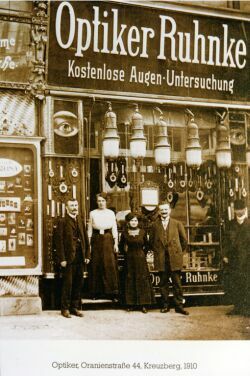
(Photograph from Euro-Focus site)
By 1915, Optiker Ruhnke had become the largest optician in Europe with specialized factories in Berlin (for pince-nez and spectacle frames) and Rathenow-Neue Schleuse (optical glass).
Unfortunately, Carl would not live to enjoy the fruits of his business empire. On 20 April, 1922, Carl died following an automobile accident while on a business trip to Magdeburg. Carl was only 48 years old, but his legacy would continue. The Optiker Ruhnke empire passed to his wife, Martha who managed it quite ably until her death. In 1933, their son, (Carl) Fritz, joined the company and assisted his mother. In their capable hands, Optiker Ruhnke quickly grew to become the largest European optician with its own production facility in Rathenow, west-northwest of Berlin.
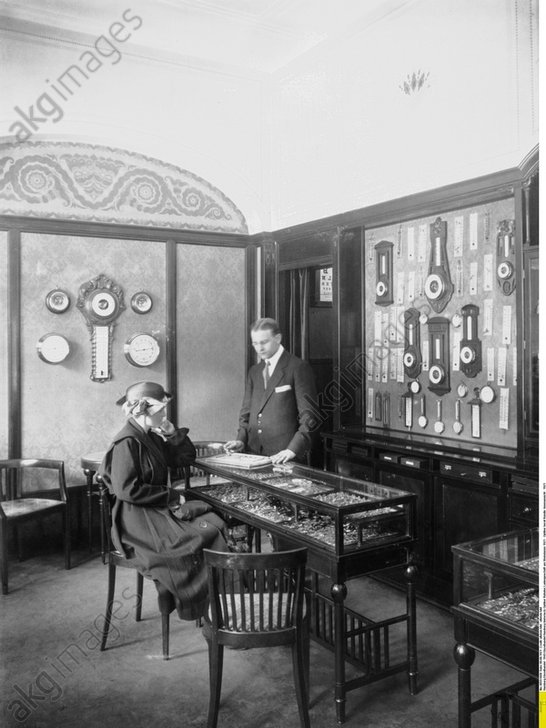
(From AKG Images site)
The Optiker Ruhnke name was very well-known and many famous individuals sported a pair of spectacles bearing that name. When Adolf Hitler was looking for a pair of reading glasses, he went to the best, and purchased a pair of Optiker Ruhnker reading glasses. Hitler apparently didn’t want the public to know that he required reading glasses (interpreted as a sign of genetic weakness) and in seeking out an optician of ultimate discretion, chose Optiker Ruhnke. Rather odd to think that Josef possessed a pair of reading glasses from the same optician.


On 15 March, 1953, after a long battle with abdominal cancer, Carl’s widow, Martha, passed away in a hospital in Moabit, Berlin. The Optiker Ruhnke empire continued after her death as various family members took over the company. It was only in the early 2000s, when no one in the family wished to continue, that the firm was sold to Synoptik and became part of the Danish firm. Only three years later, however, the Synoptik shops became part of Apollo-Optik, Germany’s second largest optical chain.
Eyeglasses of Josef Jakobs
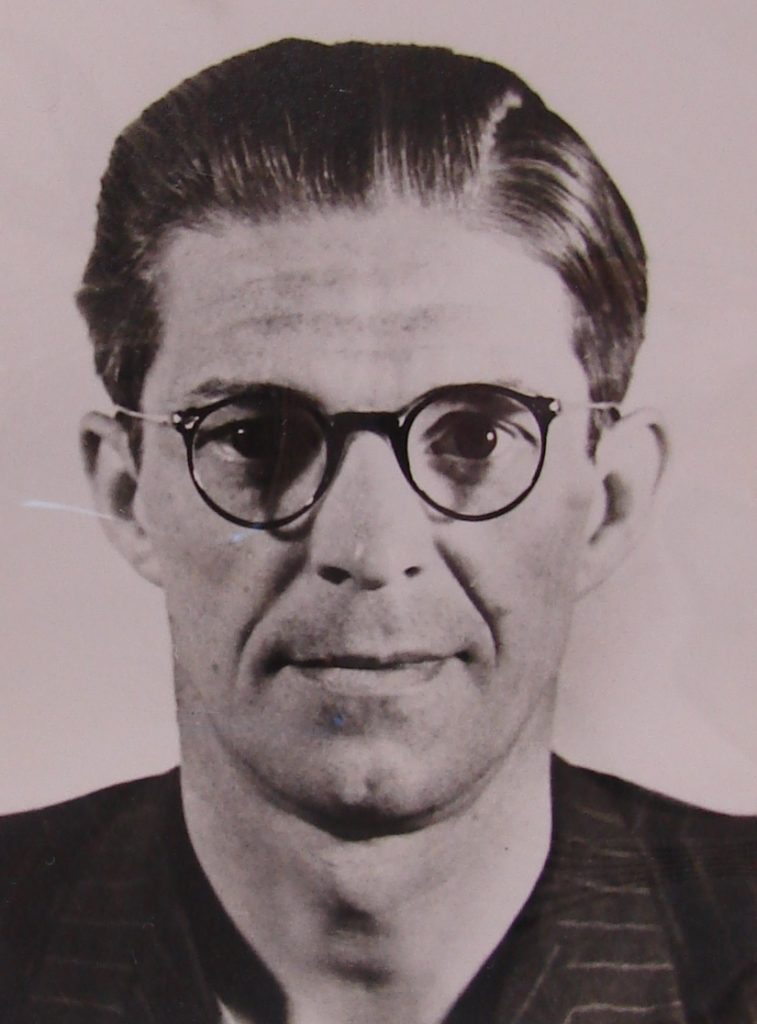
Receiving Josef Jakobs’ eyeglasses from Chidlow’s daughter was a moving experience for our family. My father couldn’t quite believe that he held in his hands the reading glasses that his own father had actually worn.
The first thing one notices about the eyeglasses is that the case is simply a soft leather sleeve with a small Optiker Ruhnke logo embossed in the lower corner of the case. While Hitler had a hard case for his glasses, Josef seems to have been more of a budget shopper.
The second thing one notices, immediately upon pulling the glasses out of the case, is that they are much smaller than one would expect. The leather case is 14.2 cm long and the folded eyeglasses are 11.5 cm from hinge to hinge. They seem incredibly tiny for a man approaching 6 feet! It is possible that Josef had a narrow face. One can see, in the image above, that the arms of the eyeglasses do extend outwards towards his ears. Perhaps small eyeglasses were the fashion back then? Certainly the arms of the glasses do extend outwards quite wide from the hinges (see slideshow below). This is very different from my Dollar Store reading glasses, where the arms are at a 90 degree angle to the frame.
I found the Vintage Optical Shop site which has a number of vintage eyeglasses for sale. There was one pair that was listed as eyeglasses for a child which had a frame width of 4 3/8″ (4.375″) which is about 11.11 cm. That does make me wonder if these were child’s glasses.
I have tried Josef’s glasses on and they do help my eyes see things more clearly! Either they are very good glasses or I seem to have a similar prescription to Josef. While they do fit, width-wise, they do not fit depth wise. I can’t quite get the arms to hook over my ears. Perhaps I have a deeper nose-ear length than Josef. Or perhaps they were manufactured that way. The other possibility is that these are actually children’s glasses, perhaps bought second-hand? Whether Josef bought the glasses in Berlin at the Optiker Ruhnke shop on Wilmersdorfer Straße 48 or at one of their shops in Hamburg is, of course, unknown.
Summary
I wasn’t expecting to discover much about Optiker Ruhnke but am always pleased to be proved wrong! It is a bit disconcerting to learn that Hitler also wore a pair of reading glasses from Optiker Ruhnke. One never knows what one might discover when the digging starts.
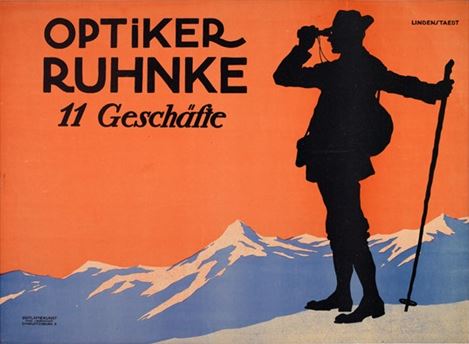
I am still a bit perplexed by Josef’s eyeglasses. Are they children’s glasses or just were incredibly small glasses just the norm back then? Any and all feedback greatly appreciated!
Sources
Eine Große Familie – Ihr Stammbaum im Internet – has a page with a bit of ancestry info on Karl Ruhnke
Euro-Focus site – has a photograph of the Ruhnke’s in front of their store.
Memorabilia of War site – article on Hitler’s Optician
Alamy – has photographs of Hitler and his Optiker Ruhnke reading glasses
Daily Mail UK – article about Hitler items going to auction, including a pair of Optiker Ruhnke spectacles
Imperial War Museum – has an Optiker Ruhnke geometry set
Katawiki site – has a concluded sale listing of a pair of opera glasses which features a small write-up on Carl Ruhnke
Knerger.de site – has a small write-up on Ruhnke and photographs of the family grave in Zehlendorf
MorgenPost – has an article about the Synoptik purchase of Optiker Ruhnke
Hamburg Abendblatt – article about the Synoptik purchase of Optiker Ruhnke
Ancestry – various genealogical documents on the Ruhnke family and an ancestry tree
Berlin Strassenbahn site – has a pic with Optiker Ruhnke advertising
Header image by Felix Wolf from Pixabay (not Josef Jakobs’ eyeglasses).
